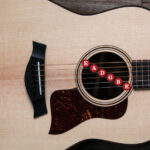The Emaj7 chord, also known as the E major 7th, is a sophisticated and beautiful chord that will add depth and richness to your guitar playing. Often heard in jazz, pop, and R&B music, the Emaj7 offers a lush, complex sound that goes beyond basic major chords. If you’re ready to expand your chord vocabulary and explore beyond standard guitar chords, understanding and mastering the Emaj7 is a fantastic next step.
What is the Emaj7 Chord?
The Emaj7 chord is built from four notes: E, G#, B, and D#. These notes are derived from the E major scale and are stacked in intervals of a root, major third, perfect fifth, and major seventh. In musical terms, these intervals are:
- 1 (Root): E
- 3 (Major Third): G#
- 5 (Perfect Fifth): B
- 7 (Major Seventh): D#
This combination of intervals gives the Emaj7 its distinctive, sweet, and slightly jazzy quality. It’s a major chord with an added touch of complexity thanks to the major seventh interval, making it more colorful than a simple E major chord.
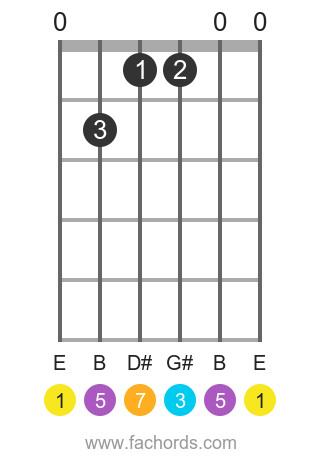 Emaj7 chord position 1 open guitar chord diagram
Emaj7 chord position 1 open guitar chord diagram
Emaj7 Chord Positions on Guitar
There are multiple ways to play the Emaj7 chord on the guitar, utilizing different positions across the fretboard. Learning various voicings will not only improve your dexterity but also give you tonal options when playing songs. Here are several common positions for the Emaj7 chord:
Position 1: Open Position
This is often the first Emaj7 position guitarists learn. It utilizes open strings and is relatively straightforward to fret.
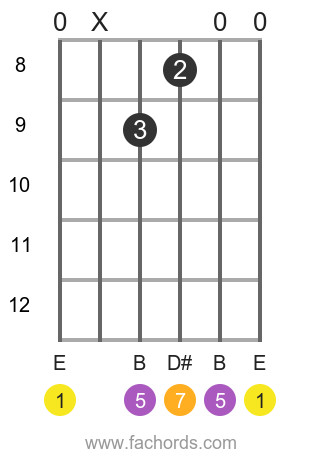 Emaj7 chord position 2 movable bar guitar chord diagram
Emaj7 chord position 2 movable bar guitar chord diagram
Position 2: Movable Barre Chord Shape
This shape is movable, meaning you can play a Maj7 chord with any root by shifting this shape up or down the neck.
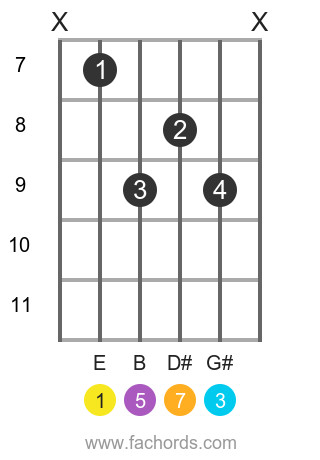 Emaj7 chord position 3 open guitar chord diagram
Emaj7 chord position 3 open guitar chord diagram
Position 3: Open Voicing
Another open position, this voicing provides a slightly different sonic texture compared to Position 1.
 Emaj7 chord position 1 open guitar chord diagram
Emaj7 chord position 1 open guitar chord diagram
Position 4: Barre Chord on the 5th Fret
This barre chord position is useful for playing Emaj7 higher up the neck.
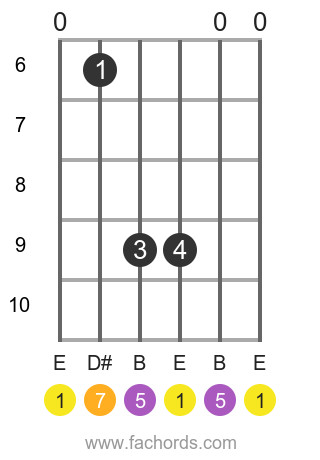 Emaj7 chord position 5 barre guitar chord diagram
Emaj7 chord position 5 barre guitar chord diagram
Position 5: Movable Barre Chord (Root on A String)
This is another movable barre chord shape, with the root note located on the A string.
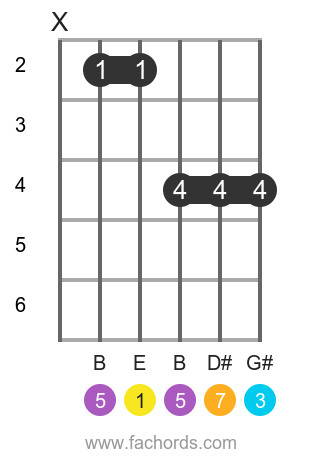 Emaj7 chord position 6 movable barre chord guitar diagram
Emaj7 chord position 6 movable barre chord guitar diagram
Position 6: Barre Chord with Open String Element
This position combines a barre with an open high E string for a unique voicing.
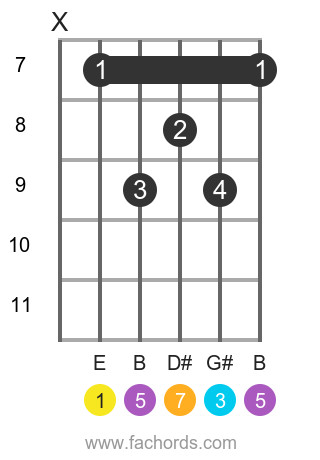 Emaj7 chord position 7 barre open string guitar chord diagram
Emaj7 chord position 7 barre open string guitar chord diagram
Position 7: Open Position with 7th on Top
This open position voicing places the major 7th interval on the highest string.
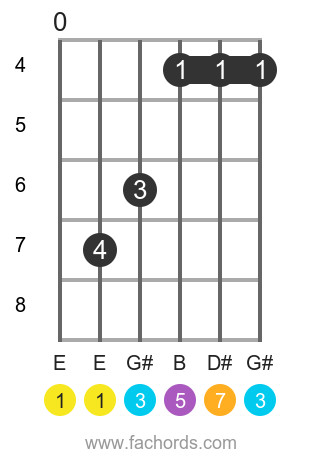 Emaj7 chord position 8 open position guitar chord diagram
Emaj7 chord position 8 open position guitar chord diagram
Position 8: Higher Open Position
This position allows you to play Emaj7 in a higher register using open strings.
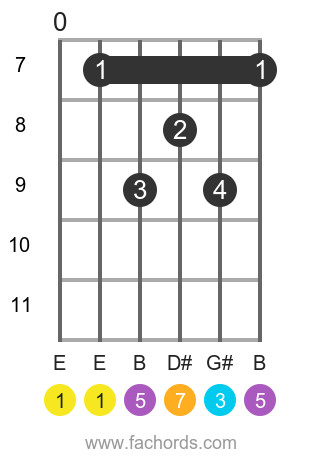 Emaj7 chord position 9 open position guitar chord diagram
Emaj7 chord position 9 open position guitar chord diagram
Tips for Playing the Emaj7 Chord
- Finger Placement: Ensure your fingers are positioned just behind the frets for a clear, buzz-free sound.
- Clean Sound: Strive for each note in the chord to ring out clearly. Practice slow chord changes to achieve this.
- Experiment with Voicings: Try out each of the positions above to find your preferred sound and fingerings.
- Practice Chord Transitions: Work on smoothly transitioning to and from the Emaj7 chord in common chord progressions.
Using the Emaj7 Chord in Music
The Emaj7 chord is versatile and can be used in various musical contexts. Its rich sound makes it particularly well-suited for:
- Jazz and Blues: Emaj7 is a staple in jazz progressions and adds a sophisticated flavor to blues.
- Pop and R&B: Many pop and R&B songs utilize major 7th chords to create smooth and melodic harmonies.
- Songwriting: Experiment with incorporating Emaj7 to add emotional depth and interest to your own songs.
By learning the Guitar Chords Emaj7, you’re adding a valuable tool to your guitar playing arsenal. Practice these positions, explore different musical styles, and enjoy the beautiful sound of the E major 7th chord!

